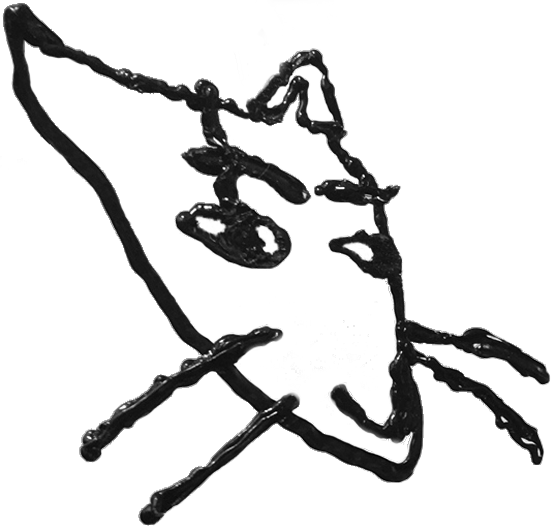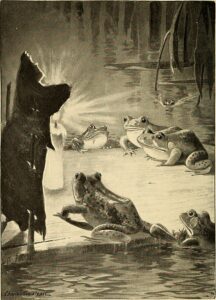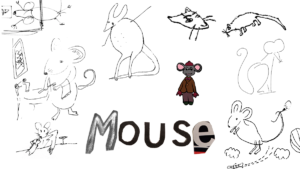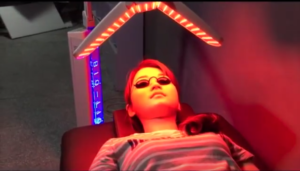“The idea is the observation of a fact. Today we live in a period of extreme instability—political instability, moral instability, social instability, and even physical instability. The world around and inside us is unstable. I am making a film on the instability of feelings, on the mystery of feelings. These characters find themselves on an island, in a rather dramatic situation; a girl in the party is lost. They start to look for her. The man who loves her should be worried, upset, anxious. And, really, at the beginning, he is. But then, slowly, his feelings grow weaker, because they have no strength. And he doesn’t want to look for her; by then he isn’t worried about it. He is attracted by other feelings, by other ‘adventures,’ by other experiences just as unsteady and unstable.”
— Michelangelo Antonioni, The Architecture of Vision
1.
In the opening sequence of Michelangelo Antonioni’s Red Desert, Giuliana (Monica Vitti), in a visible panic, buys a wilted-looking half-eaten sandwich from a striking laborer and begins to devour it after trying to pawn it off on her young son.
The scene has an opacity characteristic to Antonioni, and especially to his use of Vitti, whose inscrutability is among her great strengths. Vitti is desperate to buy the sandwich but apparently not particularly hungry. Everyone involved, including her young son, seems utterly puzzled by her behavior. What is going on here? Is Vitti searching for connection? Trying to find a way into interaction? I think probably the answer is simpler: she just didn’t think of eating until the moment that she saw the sandwich.
2.
In the summer of 2019, I moved to Utah to learn to plant sage and cut trails. During the next twenty-four months, I spent a frigid night driving around the South Dakota prairie, shining a fishing light into the scrub, trying to catch the eyeshine of the park’s population of endangered black-footed ferrets. I stayed with an aunt on the central coast of California for a while, doing menial internet piecework and taking long hikes up into the hills, then drove back to the mountains of Colorado to farm with some permaculturists. In the spring of 2020, I watched gas drop below two dollars a gallon during a long and lonely trip home on the wrong side of the Wasatch range.
At first due to my job and then for some other reason, I was always moving. I drove through basins in the high mountain country so dense with smoke that it was never brighter than twilight. I saw a brushfire on the side of the road, five feet from the highway, men spread around it in a tableau in the attitudes of work, one with a hose, all oddly still. I watched a dust storm coming up Owens Valley, over the Coso Range and then sweeping into town and out of town, down towards Manzanar. I took the Inyokern to Lancaster line and was alone on the bus, both ways. On the way back, a man showed up in an unmarked white van, idled by the bus stop. I waited and watched. The bus was very late. Eventually, I walked up and asked him if this van was in fact not a van but the bus. He was reproachful, fatherly: yes, he was about to leave. I would have been stranded. Why hadn’t I asked earlier?
No one else got on the whole ride back. But he wasn’t lying. It was just that no one wants to go to Lancaster by bus.
3.
The sort of moment-to-moment existence in which one ends up begging to buy half-eaten meals off day laborers has its own self-perpetuating inertia. With four months left before I returned, through my graduate program, to a world of structure and shared experience, I developed an intense dislike of making plans and devoted all my energies to keeping the future open. I would think ahead not even one hour. After I left the trail crew, I drove interstate between temporary jobs and often slept in my car, which made settling noises, distant metal creaks, all night long. I slept the vigorous sleep of a person who can’t even begin to have concerns.
It is an exaggeration to say that during my two years working odd jobs in the desert, I felt no desire more lasting than the desire to have a sandwich or to see what was beyond the next hill. That in such a state the possibility of wanting something further in the future than lunch, of desiring a life beyond the reach of the next hill, simply cannot occur. But probably not more than a bit.
I have dazzling snapshot memories from that time. The way the wash fell away from the mountain range halfway between Zion and Las Vegas, and that the other side of the basin was as far away from me as anything has ever been. A flock of wild geese overhead as the rain threatened on the Dakota plains. A lake which wore its shining ripples so lightly that they in turn might blow away at any moment, leaving a solid pane of glass. Always something out of the corner of my eye, in transit.
There are directors for alcoholics, for gamblers, for sex addicts, big-hearted American career men and women, for NYC gallery assistants, for connoisseurs of masculinity in all its variations, and for sentimental dads. During this time, Michelangelo Antonioni was for me.
4.
Antonioni used an unexplained disappearance of a character or thing either as a signature or a crutch. It served him so well, however, because he had a gift for the cinematic version of a sort of sleight of hand: the orchestrated version of displacement, perhaps something analogous to the unsettling familiar. He understood the delicate balance one must walk in order to provoke a feeling of loss and disorientation which sticks and sticks.
Watching L’Avventura, for example, one is particularly struck by the way that the camera follows the characters, by his supreme patience. We trail Vitti’s Claudia as she traverses the landscape of the island where her friend Anna disappears on a summer outing, and feel we are watching her search unfold in real time, privy to her every moment. The camera is the patient cataloger of everything under the sun. It recognizes that there is no mystery without the careful inventory of clues, bringing forth the sense that we have entered into a world in which it is reasonable to seek answers.
In the first part of the movie, we watch Claudia and Sandro, Anna’s fiancé, slowly realize how completely and without a trace Anna has disappeared. In the second half the two engage in a sort of disorganized wandering search, in which the vanished woman seems always to be around the next corner, just outside the frame. After a while, however, the search transforms into a shiftless drifting through the Italian countryside, the vanished friend forgotten, the two protagonists who replace her orbiting one another with vaguely amorous intentions. Midway through, they arrive at an inexplicably abandoned town, search, and leave. After their exit, the camera, in a movie full of still takes, drifts forward slightly from out of an alley. The cameraperson is walking up behind them. At this moment, the movie is genuinely frightening.
Claudia and Sandro do not find Anna and seem, very quickly, to give up looking. We move from one mystery, the mystery in which Anna is involved, to a second-order mystery about narrative, struggling to put together the pieces we have been given. We try and fail to assign motive to these people, to understand how a person can disappear from the arc of a story without repercussion. How can this have happened?
5.
Antonioni’s films are shot through with disappearance, built around it. In L’Avventura there is a ghostly film, existing alongside the film we actually have, in which the mystery of Anna’s disappearance is solved or simply mourned properly. In a way, the emotional core exists in this secondary film; the primary film would fly to pieces without it. But it is essential for the sanctity of the secondary film that no part of it appears on camera.
The same structure is echoed, perhaps most famously, in Blow-Up, which is almost entirely occupied with a completely fruitless exploration by a photographer (Luke Hemmings) of what he thinks is a murder captured in the distance of one of his photographs. The murder, the fulcrum around which the movie revolves, retains its gravity by appearing only at a distance, in a photograph which is later stolen.
6.
Writing on Baudelaire, Walter Benjamin tells us that with the quickening transformation of modernity comes the thinning out of the deep river of experience and memory, times that eat away at the common world and the rituals that act as handles for us to grasp, around which we can order our perception of aesthetic value. In these times, what could have been the story of a life becomes a series of unordered episodes. There is no artistic motion more representative of this than that of Hemmings’ acquisitive operation of the camera in Blow-Up as he shoots reams of photographs of interchangeable models: the production of all of these disposable images, fit for perpetual reproduction, reinterpretation, re-interpolation.
In our and Benjamin’s world of flux, where each thing can be re-understood and recreated, the experience of beauty, which must have an unchangingness, develops a necessary structure. Aesthetic objects attain their permanence, their distance and impenetrability, by slipping from our view. This is their only way of reaching the distance at which art must stand from the viewer. The best thing that could happen to a photograph is for it to be stolen. Monica Vitti’s Claudia, fit to be seen and understood, is lovely, but the true beauty is Anna, who is gone.
“It is a farewell forever,” Benjamin writes on Baudelaire, “which coincides in the poem with the moment of enchantment.” Later, he remarks on Baudelaire’s object of love that “one might not infrequently say that it was spared, rather than denied, fulfillment.”
7.
In the last leg of my two-year journey, I took long drives out into the foothills of the San Juans in Colorado, and then into the mountains themselves. I was frightened because the hills seemed alive with people who had abandoned their jobs to live in tents and cars and under the open stars, whose encampments were at the side of every river, and I did not know where they had come from or where they were headed. I played games with myself, saying that I would stop and take a photograph in five minutes, thirty, at the next town, at 3 p.m. I did not stop at all.
At night, I read ferociously about lost and abandoned mines, about the warrens under the prairie at Wind Cave National Park, where I had cut trails for a month, savoring the names of the caves: “The Flatlands,” “Forty Mile Hall,” “Beyond the Green Door, What the Hell Lake.” The best thing about Wind Cave is that they believe that only a small fraction of it has been explored.
A search has a capacity to forever transform a place. Each site, each thing, seen at a distance, can never be seen again in the same way. Beauty does not outlive the moment in which it is shocking and new.
8.
We are standing in a field on a moonless, starless night. It is as if the field in which we stand is enclosed within some further cave. We are wandering through an array of intricate wooden statues with buckets of kerosene and matches. We are drenching the statues in kerosene and dropping matches on them. As they burn, we are watching. The world of human actions is always coming up anew; it cannot be exhausted; this is not the case with the world of things. When we see a statue we like, we cannot gesture for our friends to come around, because they burn so quickly. We will not see them again. This field of statues is large; no one has checked to see if it is boundless.
9.
In the dark field of my own memory, I am awakening in a crowded bunkhouse in the warm dark, back in South Dakota. Outside it is cold, early October, pitch black. We are going about the business of dressing and eating, hurried in the hospitable dark. Driving up into the hills, everyone drops from the breakfast-table chatter into silence. Soon, we are staggering through the basin, carving out a trail. The work is difficult, monotonous.
As I remember it, the prairie at the arrival and departure of the sun is the best of places. It is often hard to love, swarmed with gnats and shadowed by biting rain. But now the sun is coming up. We are down in the canyon and it is bathing the far wall in intolerable golden light. We are going through the tall grass that lines the river and our boots are filling with water. I am cutting saplings with a handsaw. We are doing our work on the canyon, changing it. It will never again open up to us in the way it did as we turned the corner this morning. In any case, I will not return. I miss it dearly.
10.
At the end of Blow-Up, Hemmings, in transient community with a group of yardbirds who have followed him throughout the movie, jumps into a pantomime game of tennis to retrieve a pantomime tennis ball. He mimes the throw, and in a moment of total reversal, something appears out of nothing. The ball is there. We see his eyes travel back and forth, watching it, and begin to hear it bounce off the rackets. The cinematography, as always, is careful and methodical. One has the opportunity to see one’s fill. “See?” Antonioni says, “I have hidden nothing from you.”




